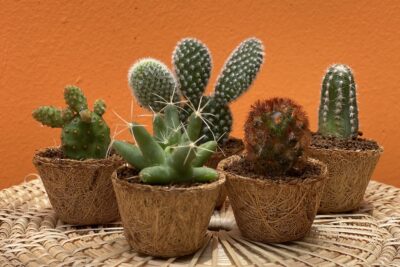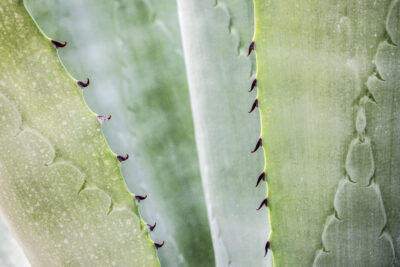
Succulent Transplant Shock: Causes, Symptoms, and Solutions

Succulent plants have gained immense popularity in recent years due to their unique and visually appealing characteristics. These plants are known for their ability to store water in their leaves, stems, or roots, enabling them to survive in arid and dry conditions. However, despite their resilience, succulents can still experience transplant shock, which can be detrimental to their overall health and survival.
We will explore the causes, symptoms, and solutions of succulent transplant shock. We will discuss why succulents may experience shock when being transplanted, such as disruptions to their root system or environmental changes. Additionally, we will outline the signs and symptoms that indicate a succulent is in shock, including wilting, discoloration, or leaf drop. Finally, we will provide practical tips and solutions to help your succulents recover from transplant shock and thrive in their new environment.
- Use well-draining soil to prevent waterlogged roots
- Gradually acclimate the plant to its new environment
- Provide adequate sunlight for the succulent
- Avoid overwatering the transplanted succulent
- Use a rooting hormone to promote healthy root growth
- Prune any damaged or diseased parts of the plant
- Apply a balanced fertilizer to promote root development
- Protect the succulent from extreme temperatures
- Monitor the plant regularly for signs of stress
- Provide proper ventilation to prevent fungal infections
- Frequently Asked Questions
Use well-draining soil to prevent waterlogged roots
When it comes to preventing succulent transplant shock, one of the key factors to consider is the type of soil you use. Succulents thrive in well-draining soil that allows excess water to flow out easily.
Waterlogged roots are one of the main causes of transplant shock in succulents. When the roots are continuously exposed to excessive moisture, they can become weak and prone to rot. This can lead to various symptoms of distress in your succulent.
To avoid this issue, opt for a well-draining soil mix specifically formulated for succulents. These mixes usually contain a combination of materials like perlite, pumice, or coarse sand, which help improve drainage and prevent waterlogging.
Additionally, it's important to ensure that the pot or container you choose has drainage holes at the bottom. These holes allow any excess water to escape, further reducing the risk of waterlogged roots.
By using well-draining soil and providing proper drainage, you can significantly minimize the chances of succulent transplant shock caused by waterlogged roots.
 Caring for Succulents Planted in a Fire Stick: A Comprehensive Guide
Caring for Succulents Planted in a Fire Stick: A Comprehensive GuideGradually acclimate the plant to its new environment
When it comes to transplanting succulents, one of the most important steps to prevent shock is to gradually acclimate the plant to its new environment. Succulents are known for their ability to adapt to various conditions, but sudden changes in temperature, light, and humidity can be overwhelming for them.
To acclimate your succulent, start by placing it in a location with indirect sunlight for a few hours each day. Over the course of a week, gradually increase the amount of sunlight it receives until it is exposed to direct sunlight for the recommended number of hours based on the specific succulent variety.
Additionally, be mindful of the temperature and humidity levels in the new location. If the succulent is used to a warmer or more humid environment, slowly introduce it to a cooler or drier setting. This can be done by adjusting the temperature or humidity levels gradually over time.
By gradually exposing your succulent to its new environment, you are giving it time to adjust and reduce the chances of transplant shock.
Provide adequate sunlight for the succulent
When it comes to succulents, providing adequate sunlight is crucial for their overall health and well-being. These plants thrive in bright, indirect sunlight and require at least 6 hours of light each day.
 Succulent Care 101: Troubleshooting Brown Tips and Effective Fixes
Succulent Care 101: Troubleshooting Brown Tips and Effective FixesHowever, it's important to note that sudden changes in sunlight exposure can cause transplant shock in succulents. This occurs when the plant is moved from a low-light environment to one with intense, direct sunlight.
To prevent transplant shock caused by sunlight, it's best to gradually acclimate your succulent to its new environment. Start by placing it in a partially shaded area for a few hours each day, gradually increasing the exposure to sunlight over a week or two. This will allow the plant to adjust to the new light levels without experiencing shock.
Additionally, make sure to position your succulent in a location where it can receive the right amount of sunlight. South-facing windows are ideal for most succulents, as they provide bright, indirect light throughout the day.
Remember, strong sunlight is essential for succulents to grow and thrive, but sudden changes can lead to transplant shock. Take the necessary precautions to ensure your succulents receive the right amount of sunlight in a gradual manner to avoid any adverse effects.
Avoid overwatering the transplanted succulent
One of the common causes of transplant shock in succulents is overwatering. It is essential to understand that succulents have unique water requirements due to their ability to store water in their leaves and stems. When transplanting a succulent, it is crucial to avoid overwatering to prevent shock and ensure a successful transition.
Overwatering can lead to root rot, which inhibits the plant's ability to absorb water and nutrients effectively. This condition can result in wilting, yellowing leaves, and a weakened overall appearance of the succulent.
 Prevent Succulent Overgrowth: Tips for Maintaining the Perfect Size
Prevent Succulent Overgrowth: Tips for Maintaining the Perfect SizeTo avoid overwatering, it is recommended to follow a proper watering schedule. Allow the soil to dry out completely between waterings, ensuring that excess water can drain out of the pot. Succulents thrive in well-draining soil, so it is essential to use a specialized succulent or cactus mix that promotes proper drainage.
Additionally, it is important to observe the succulent's watering needs based on environmental factors such as temperature and humidity. During cooler months or in humid climates, the succulent may require less frequent watering compared to warmer or drier conditions.
Overwatering can be detrimental to a transplanted succulent, causing transplant shock and hindering its overall health. By adhering to a proper watering schedule and providing well-draining soil, you can help your succulent thrive in its new environment and avoid the negative effects of overwatering.
Use a rooting hormone to promote healthy root growth
When transplanting succulents, it's not uncommon for them to experience shock as they adjust to their new environment. One way to help alleviate this shock and promote healthy root growth is by using a rooting hormone.
A rooting hormone is a substance that stimulates root development in plants. It can be especially beneficial when transplanting succulents because it encourages the growth of new roots, which are essential for the plant's overall health and survival.
There are various types of rooting hormones available, including powder, gel, and liquid forms. These hormones typically contain synthetic auxins, which are plant hormones that stimulate root growth.
How to use rooting hormone for succulent transplant shock
Here's a step-by-step guide on how to use rooting hormone when transplanting succulents:
 Signs of Sun Damage in Succulents: How to Identify and Prevent it
Signs of Sun Damage in Succulents: How to Identify and Prevent it- Prepare the succulent: Carefully remove the succulent from its original pot, taking care not to damage the roots. Gently shake off excess soil from the roots.
- Apply rooting hormone: Dip the cut ends of the succulent's roots into the rooting hormone. Make sure to coat the ends evenly.
- Plant the succulent: Place the succulent in its new pot or location, ensuring that the roots are properly positioned and covered with soil. Press the soil gently around the plant to secure it.
- Water the succulent: Give the newly transplanted succulent a thorough watering to help settle the soil and activate the rooting hormone. Be careful not to overwater, as succulents prefer well-draining soil.
- Care for the succulent: After transplanting, provide the succulent with the appropriate care, including adequate sunlight, proper watering, and well-draining soil.
By using a rooting hormone during the transplanting process, you can give your succulent a better chance of overcoming transplant shock and establishing healthy roots. Remember to follow the instructions on the rooting hormone packaging for the best results.
Keep in mind that while rooting hormone can be beneficial for succulents, it is not always necessary. Some succulents have naturally strong root systems and may not require the use of a rooting hormone.
Prune any damaged or diseased parts of the plant
One of the first steps to address succulent transplant shock is to carefully inspect the plant for any damaged or diseased parts. These can include wilting or discolored leaves, mushy stems, or signs of pests. Using clean and sharp pruning shears, carefully remove these affected parts to prevent further spread of disease or damage.
It is important to note that when pruning succulents, you should always aim to make clean cuts just above a node or leaf joint. This encourages healthy regrowth and minimizes the risk of infection. After pruning, allow the plant some time to recover before proceeding with any further steps.
Provide proper lighting and temperature conditions
Succulents thrive in bright light and warm temperatures, so ensuring they are in the right environment is crucial for their recovery from transplant shock. Place the plant in a location where it receives ample sunlight, preferably near a south-facing window or under grow lights.
However, be cautious not to expose the succulent to direct sunlight for extended periods, especially during the initial recovery phase. Too much sun can cause sunburn and further stress the plant. Gradually increase the exposure to sunlight over time.
 Can Split Rock Succulents Develop Wrinkles?
Can Split Rock Succulents Develop Wrinkles?Additionally, maintaining suitable temperature conditions is essential. Most succulents prefer temperatures between 60°F and 80°F (15°C - 27°C). Avoid placing them near drafty windows or in areas with extreme temperature fluctuations.
Water the plant sparingly
One of the most common mistakes when dealing with succulent transplant shock is overwatering. It is crucial to allow the plant's roots to recover and establish themselves before resuming a regular watering routine.
During the recovery period, water the succulent sparingly and only when the soil is completely dry. Overwatering can lead to root rot and exacerbate the shock the plant is already experiencing. It is better to underwater than to overwater during this critical phase.
When watering, ensure that excess water drains out of the pot through the drainage holes. Succulents are highly susceptible to root rot if left in standing water. Using a well-draining soil mix specifically formulated for succulents can also help prevent waterlogging.
Minimize disturbance and provide a stable environment
While the succulent is recovering from transplant shock, it is essential to minimize any disturbances. Avoid moving the plant around unnecessarily or repotting it too soon. Transplant shock can already be stressful for the plant, and additional disruptions can hinder its recovery.
Provide a stable environment by avoiding sudden changes in temperature, humidity, or light conditions. Keep the plant away from cold drafts or hot air vents. Consistency in the environment helps the succulent focus on recovering and reestablishing itself.
Additionally, refrain from fertilizing the plant during the recovery period. Fertilizers can further stress the plant's weakened state and potentially cause more harm.
 Top Low Maintenance Indoor Succulent Plants for Easy Care and Beauty
Top Low Maintenance Indoor Succulent Plants for Easy Care and BeautyBy following these steps and providing the necessary care, you can help your succulent recover from transplant shock and thrive once again.
Apply a balanced fertilizer to promote root development
When transplanting succulents, it is essential to provide them with the nutrients they need to establish healthy root systems. One effective way to promote root development is by applying a balanced fertilizer.
A balanced fertilizer contains equal amounts of nitrogen, phosphorus, and potassium (N-P-K). Nitrogen is responsible for promoting leaf and stem growth, phosphorus aids in root development, and potassium supports overall plant health.
Before applying any fertilizer, ensure that your succulent is healthy and has been watered adequately. This will prevent any potential burning of the roots. Once you've confirmed the plant's condition, follow these steps:
- Choose the right fertilizer: Look for a balanced fertilizer with an N-P-K ratio of 10-10-10 or similar. This composition will provide the necessary nutrients without overwhelming the plant.
- Dilute the fertilizer: Mix the fertilizer with water according to the instructions provided on the packaging. A general guideline is to dilute it to half strength.
- Apply the fertilizer: Gently pour the diluted fertilizer around the base of the succulent, making sure to avoid the leaves. This will allow the roots to absorb the nutrients gradually.
- Monitor the succulent: After applying the fertilizer, observe the plant closely for any signs of stress or burn. If you notice any adverse effects, discontinue the use of fertilizer immediately and flush the soil with water.
- Repeat as needed: Depending on the specific fertilizer and the needs of your succulent, you may need to reapply the fertilizer every few weeks or months. Always follow the instructions provided by the manufacturer.
Remember that while fertilizers can be beneficial for succulents, moderation is key. Overfertilizing can lead to nutrient imbalances, root burn, or even plant death. It is crucial to strike a balance and provide your succulent with the right amount of nutrients to support healthy root development without overwhelming the plant.
Protect the succulent from extreme temperatures
One of the primary causes of succulent transplant shock is exposing the plant to extreme temperatures. Succulents are known for their ability to tolerate harsh conditions, but sudden temperature changes can still have a negative impact on their health. To prevent transplant shock caused by extreme temperatures, follow these guidelines:
 Can You Mist Succulents Every Day? What You Need to Know
Can You Mist Succulents Every Day? What You Need to Know- Avoid planting during extreme weather: It's best to transplant your succulent during mild weather conditions. Avoid doing so during periods of intense heat or cold, as this can increase the chances of transplant shock.
- Gradually acclimate the succulent: If you need to transplant your succulent during a time of extreme weather, it's crucial to acclimate the plant slowly. Start by exposing it to the new environment for short periods, gradually increasing the duration over a few weeks. This will help the succulent adjust to the temperature changes and minimize the risk of shock.
- Provide shade: If you live in an area with scorching summers, consider providing some shade to your newly transplanted succulent. This can be achieved by using shade cloth or placing the plant in a location that offers partial shade during the hottest part of the day. Shielding the succulent from direct sunlight can help prevent overheating and reduce the chances of transplant shock.
- Protect from frost: Similarly, if you're transplanting your succulent during winter, take precautions to shield it from frost. Cover the plant with a frost cloth or move it indoors when temperatures drop below freezing. Frost can damage the succulent's cells and lead to transplant shock.
By taking these steps to protect your succulent from extreme temperatures, you can greatly reduce the risk of transplant shock and ensure the plant's successful adaptation to its new environment.
Monitor the plant regularly for signs of stress
When you transplant a succulent, it's important to keep a close eye on the plant for any signs of stress. Transplant shock can occur when a succulent undergoes a significant change in its environment, such as being moved to a new pot or location. By monitoring the plant regularly, you can catch any issues early on and take the necessary steps to alleviate the stress.
Causes of succulent transplant shock
There are several factors that can contribute to succulent transplant shock:
- Root disturbance: When transferring a succulent to a new pot, the roots can get damaged or disturbed. This can lead to a temporary halt in growth and shock.
- Change in light exposure: Succulents are adapted to specific light conditions. A sudden change in light exposure can cause stress and affect their overall health.
- Watering issues: Overwatering or underwatering during the transplanting process can put additional stress on the succulent.
- Temperature fluctuations: Extreme temperature changes can shock the plant and hinder its ability to adapt to the new environment.
Common symptoms of succulent transplant shock
It's important to be aware of the common symptoms that indicate a succulent is experiencing transplant shock. These symptoms may include:
- Wilting: The leaves may appear limp or droopy.
- Discoloration: The leaves may change color, becoming yellow or brown.
- Leaf loss: The plant may shed its leaves or have them fall off easily.
- Stunted growth: The succulent may stop growing or show signs of slow growth.
- Root rot: In severe cases, the roots may become mushy or black, indicating rot.
Solutions to alleviate succulent transplant shock
If you notice any signs of transplant shock in your succulent, it's crucial to take action promptly. Here are some solutions to help alleviate the stress and aid in the recovery process:
- Provide proper lighting: Place your succulent in an area that receives the appropriate amount of light based on its specific needs.
- Adjust watering: Ensure the soil is well-draining and water the succulent only when the top inch of soil is dry. Avoid overwatering, as it can lead to root rot.
- Maintain consistent temperature: Keep the succulent in an environment with stable temperatures to minimize stress.
- Apply a rooting hormone: Using a rooting hormone during transplanting can stimulate root growth and aid in recovery.
- Be patient: Transplant shock can take time to overcome. Give your succulent the necessary time and care it needs to recover fully.
By being vigilant and providing the right care, you can help your succulent overcome transplant shock and thrive in its new environment.
 Epsom Salt for Succulent Plants: A Complete Guide
Epsom Salt for Succulent Plants: A Complete GuideProvide proper ventilation to prevent fungal infections
Proper ventilation is crucial to prevent fungal infections when transplanting succulents. Fungi thrive in moist and stagnant environments, making succulents susceptible to infections if they are not adequately ventilated during the transplantation process.
When transplanting your succulents, ensure that you choose a well-ventilated area with good air circulation. Avoid transplanting in areas that are prone to high humidity or excessive moisture, as these conditions create an ideal breeding ground for fungi.
Additionally, it is essential to provide proper ventilation for your succulents even after transplantation. This can be achieved by placing the potted succulents in an area with adequate air circulation, such as near an open window or a fan. This will help prevent the buildup of moisture around the plants, reducing the risk of fungal infections.
Furthermore, consider using well-draining soil and pots with drainage holes. These measures will help prevent water from pooling around the roots, minimizing the chances of fungal growth. By allowing excess water to drain out, you can ensure that the soil remains dry and inhospitable for fungi.
Key Points:
- Proper ventilation is crucial to prevent fungal infections in succulents.
- Choose a well-ventilated area with good air circulation for transplanting.
- Avoid high humidity and excessive moisture during transplantation.
- Ensure proper ventilation even after transplantation.
- Use well-draining soil and pots with drainage holes to prevent water buildup.
By providing proper ventilation during and after transplanting your succulents, you can significantly reduce the risk of fungal infections. Remember to choose a well-ventilated area, avoid excessive moisture, and ensure that your succulents have access to fresh air. These measures will help promote the health and longevity of your transplanted succulents.
 Is It Normal for My Succulent to Have an Unusual Growth?
Is It Normal for My Succulent to Have an Unusual Growth?Frequently Asked Questions
1. What causes transplant shock in succulents?
Succulent transplant shock can be caused by factors such as root damage, sudden changes in environmental conditions, or improper handling during the transplant process.
2. What are the symptoms of transplant shock in succulents?
Symptoms of transplant shock in succulents may include wilting, yellowing or browning leaves, stunted growth, and root rot.
3. How can I prevent transplant shock in succulents?
To prevent transplant shock in succulents, make sure to handle the plant gently during the transplant process, ensure the new pot has well-draining soil, and gradually acclimate the plant to its new environment.
4. What are the solutions for transplant shock in succulents?
Some solutions for transplant shock in succulents include providing proper watering and drainage, avoiding over-fertilization, and providing adequate sunlight and temperature conditions for the plant.
If you want to read more articles similar to Succulent Transplant Shock: Causes, Symptoms, and Solutions, you can visit the Care and Maintenance category.






You Must Read